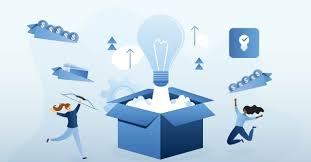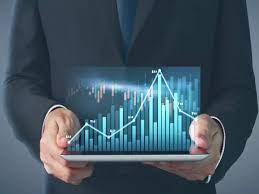Hello!
 Every product has a shelf-life. It doesn’t matter if it’s your car, your phone, or exercise equipment — eventually, its sales potential and use will end. Every product has a life cycle.
Every product has a shelf-life. It doesn’t matter if it’s your car, your phone, or exercise equipment — eventually, its sales potential and use will end. Every product has a life cycle.
It is a life cycle that sees it go from being the next big thing to becoming something everyone knows about and then eventually forgotten all about.
This is a constant process that all businesses must be aware of and understand how it affects their products. Let’s look at how to leverage the product lifecycle to manage your business.
What is a product life cycle?
Product life cycles are the time between the introduction of a product to the market and its eventual decline or discontinuation. This cycle can be broken up into different stages, including–development, introduction, growth, maturity, saturation, and decline.
 The product’s life cycle is used to decide when to increase advertising, adjust the pricing or explore new markets. You can also redesign packaging and adjust messaging.
The product’s life cycle is used to decide when to increase advertising, adjust the pricing or explore new markets. You can also redesign packaging and adjust messaging.
What are the stages of the product life cycle?
Each stage has its costs, opportunities, and risks, and individual products differ in how long they remain at any of the life cycle stages. There are many opinions on whether there should be four, five, or six stages in the product’s life cycle. However, all options include the following steps.
1. Development
The product development phase is the research phase before a product launch. Although technically this is not part of the product cycle, it is an important step to know. It’s used to confirm the product’s viability, determine when it should be launched, and plan your official launch.
 This stage is where costs start to accumulate and there is no revenue. Developing products and test their effectiveness, takes years of capital investment. Because of the high risk, funding from outside sources is limited.
This stage is where costs start to accumulate and there is no revenue. Developing products and test their effectiveness, takes years of capital investment. Because of the high risk, funding from outside sources is limited.
Research and development are often funded by revenue from existing products. This stage is usually funded by the founder of the startup business from their personal resources. For those developing a new product, it may be wise to land on a minimum viable product (MVP) as early as possible.
You can make a simple sketch or a detailed prototype of your product. You just need enough to show how your product will work to potential investors and customers. You will be more likely to get investment and launch your product if you validate its market potential sooner.
2. Introduction
Your product’s introduction stage is the moment it is launched to the market. It’s where you step beyond the product itself to develop a market for the product and build product awareness.
 Here, you’ll work to carve out a target market, conduct a market analysis to understand the competitive landscape, and ideally land your first few sales.
Here, you’ll work to carve out a target market, conduct a market analysis to understand the competitive landscape, and ideally land your first few sales.
This stage is expensive because potential customers are not reached. Focusing on testing distribution channels is the best way to promote a new product. While your advertising budget may be hefty, you can strategically leverage it to identify marketing channels that lead to higher conversions.
This stage is where intellectual property rights protection can be obtained. Product pricing can be high depending on the market situation. This is to cover development costs. You may also find that it is lower.
This means you will initially lose money until your product gains traction. This is where landing initial funding efforts and mapping out your cash runway are vital to the success of your product.
3. Growth
 The product is now accepted by customers and you are trying to increase your market share. This means that revenue and demand are increasing, but hopefully at a steady pace. The time it takes to achieve steady growth depends entirely on the product and market conditions.
The product is now accepted by customers and you are trying to increase your market share. This means that revenue and demand are increasing, but hopefully at a steady pace. The time it takes to achieve steady growth depends entirely on the product and market conditions.
If you’re entering an already crowded market with a product, you’ll likely see competitors react fairly quickly. You’ll probably see slower responses from current or new entrants if you have entered a market that has less competition or is the first to market in a breakthrough industry.
In both cases, you should respond during this phase by fine-tuning your messaging, strengthening your brand presence, and expanding into new distribution channels. You might also consider adding services to help differentiate your product.
You can also consider adding add-ons or support services to your product. These add-ons, or at the very least, in development, can help you respond to your competitors and increase the return on investment(ROI), from a customer.
4. Maturity and saturation
 Sales will begin to slow down in the mature stage. You won’t experience the same rapid growth, but this doesn’t mean that you stop growing. This is typically when you’ll lower your prices, offer free add-ons, or make other adjustments to ensure that your products remain competitive.
Sales will begin to slow down in the mature stage. You won’t experience the same rapid growth, but this doesn’t mean that you stop growing. This is typically when you’ll lower your prices, offer free add-ons, or make other adjustments to ensure that your products remain competitive.
You’re also more efficient. As production costs decrease, costly errors in manufacturing can be avoided. This stage is where marketing spends are likely to be more effective and refined. Despite not growing in volume, this stage is likely to be your most profitable.
It’s important to remember that your competition may have already established its offerings at this stage. This is a sign that your competitors have seized a larger market share, which can lead to slowed growth for your product. Most consumers are likely already using a version of your product and have begun developing brand preferences.
 Any adjustments that you make to your product or services should be done at this point. Once you reach the point that no real adjustments are possible, your messaging, add-ons, and services should be fully focused.
Any adjustments that you make to your product or services should be done at this point. Once you reach the point that no real adjustments are possible, your messaging, add-ons, and services should be fully focused.
Although you may not be able to make major changes, it is possible to still market the product as a refresh with new features and benefits.
This is evident in video game consoles, where incremental hardware updates are frequently promoted to increase sales. The Nintendo Switch OLED edition is the latest example, where the only update is a new, slightly larger, and crisper screen.
5. Decline
The decline stage of the product life cycle is associated with decreasing revenue due to market saturation, high competition, and changing customer needs.
 Companies at this stage have several options:
Companies at this stage have several options:
- Discontinue the product
- Sell the manufacturing rights to another business
- Find new uses for the product
- Tap into new markets
This is the stage where you will need to weigh both the benefits and costs of each option. Is it possible to revise the product? Are there any other features that you haven’t explored? Are there other markets that you haven’t explored that could be benefited from your product?
 If you can, look to run different forecasting scenarios during this time to see what each decision could lead to depending on product performance.
If you can, look to run different forecasting scenarios during this time to see what each decision could lead to depending on product performance.
You should have other products that can support your business in the event of a product failure. It’s ideal to have multiple products, or iterations, at different stages of the product lifecycle.
How do you know what stage your products are in?
It is impossible to predict how long a product will remain in one stage. It can be difficult to identify the stage in which you are and when you have entered the next.
You can identify your current situation by understanding the characteristics of each stage. It’s easier to look at the performance of your business to see where it is now and where it is going.
 You can leverage this actual performance to then help paint the picture of what to expect in the future. This exercise can be tied into your financial forecasts and compared directly to your financial statements.
You can leverage this actual performance to then help paint the picture of what to expect in the future. This exercise can be tied into your financial forecasts and compared directly to your financial statements.
You will always be thinking about what the future holds. This will help you to have a better view of the future and avoid making poor strategic decisions. You will be able to better assess the value of each stage and can then apply the same method to other products.
How to use the product life cycle to manage your business
It is possible to develop a strategy for your product by knowing what stage you are at. As we have seen, your stage can influence both your sales and marketing decisions. This is how to use your knowledge of the product cycle to grow and manage your business.
stablish authority
 You can position your product to be cheaper, better, or have other benefits than the competition during the introduction stage. This is where you establish your brand and business.
You can position your product to be cheaper, better, or have other benefits than the competition during the introduction stage. This is where you establish your brand and business.
Are you looking to be the low-cost option? You are the local or eco-friendly solution. Or maybe you want to focus on your company mission and how your business operates.
No matter what, this stage is where you can really show your worth.
Set a pricing strategy
Pricing can be affected by each stage. The introduction stage is about positioning yourself against your competitors and trying to offset development expenses.
 Growth can take many forms depending on the availability of additional features and support. Competitors can directly impact maturity and saturation, which could lead to further advancements or price drops.
Growth can take many forms depending on the availability of additional features and support. Competitors can directly impact maturity and saturation, which could lead to further advancements or price drops.
A new product version or price drop will almost guarantee the decline stage. This will start the pricing conversation all over again, with the performance of the original product directly influencing your initial price position.
You will be able to adjust your pricing if necessary if you have a better understanding of where your product is in the price cycle.
Create a marketing strategy
How well you market a product directly affects its performance. Each stage allows you to test and refine your marketing strategy. The introduction stage is where you explore different channels and test different advertising mediums. You also work with a target audience.
 The growth stage is where you have refined your channel selection, created winning copy, and streamlined your spending.
The growth stage is where you have refined your channel selection, created winning copy, and streamlined your spending.
You can also test new channels or adjust your strategy during the maturity and decline stages. Perhaps you start a blog and sell the product through a channel that you have not yet used.
In any case, each stage presents more opportunities to research and test new concepts that help solidify your marketing strategy.
Product use can be extended or varied
You can make adjustments by knowing the stage of your product and what lies ahead. If you are in the growth stage, and you begin to notice signs of maturity, or even decline, then you can start exploring ways to increase the product’s value.
As we’ve said before, this could involve doing a refresh, adding on additional services, or looking to tap into adjacent markets.
What factors affect the product life cycle?
You have complete control over the product’s positioning, marketing, and creation. It’s important to remember that external factors can have a direct impact on how your product performs at a given stage.
Ease of entry
 The market in which you are entering your product can have a direct impact on its success or failure. This can also impact the number of potential competitors who try to enter the market.
The market in which you are entering your product can have a direct impact on its success or failure. This can also impact the number of potential competitors who try to enter the market.
Low barriers to entry (number and size of competitors, costs, market size, technology, etc.) will make it more likely that the product’s life cycle will be shorter. You’re more likely not to have a longer product life cycle if they are higher.
Advancements in technology
You may be working in an industry or country where technology advances at a rapid pace (e.g. Your product’s life span is likely to be very short if it is in an industry or country that experiences rapid technological advancement (e.g. phones, computers, etc).
However, some industries, products, and locations only see limited progress, so a single iteration might be more relevant.
 It is important to be able to recognize how fast technology changes and what changes are most relevant to consumers. Also, it is crucial to know when an iteration of technology will be required to remain competitive. A good example of this in action is the screen resolution of televisions.
It is important to be able to recognize how fast technology changes and what changes are most relevant to consumers. Also, it is crucial to know when an iteration of technology will be required to remain competitive. A good example of this in action is the screen resolution of televisions.
Some models can achieve 8K resolution but most sales and support are focused at 4K resolution. It may be a good idea to be the market leader and then focus on high-end sales depending on your market position.
If you are a distributor of mid-range TVs and monitors, it may make more sense to limit your product output to 4K with some 8K options to test for relevance.
Rate of market acceptance
The acceptance rate of consumers is a key factor in determining the product’s life expectancy. Although 4K televisions are available for years, they are just now being accepted as the standard. This is not due to the lower price but also support from streaming services, traditional cable, and other hardware manufacturers.
 This has resulted in a long product life cycle. It took several years for the product to be accepted by the market. The promised 8K replacement is still years away so the growth and maturity stages could take even longer.
This has resulted in a long product life cycle. It took several years for the product to be accepted by the market. The promised 8K replacement is still years away so the growth and maturity stages could take even longer.
To find out what the acceptance rate might be, it is often possible to look at historical life cycles. Keep in mind that the benefits of a shorter or longer life cycle depend entirely on the stage.
It may not be able to provide a return on investment if it remains in the introduction stage too long. It may be worthwhile if it is expected to enter a long growth stage.
Economic forces
 The economic state can have a direct impact on the product’s life cycle. A sudden dip, brought on by a global pandemic, for example, may stretch out the introduction phase due to less or selective spending by consumers. Recovery from a financial crisis may also reduce the introductory or even growth phase.
The economic state can have a direct impact on the product’s life cycle. A sudden dip, brought on by a global pandemic, for example, may stretch out the introduction phase due to less or selective spending by consumers. Recovery from a financial crisis may also reduce the introductory or even growth phase.
This is a very broad example and will depend on your target audience and the industry impact. Keep an eye out for market trends and keep track of any changes so you can adjust as necessary.
Also read:
- Email Marketing
- 6 Lucrative Ideas to Earn Money in 2025
- AI-Powered Hitler Running Rampant Online
- Does Target accept Apple Pay? How to Use Apple Pay at Target?
Keep your product life cycle in mind
It is essential to understand the product life cycle to manage and grow your business. This can help you to create a better business plan, make better strategic decisions, and help you prepare more accurate financial forecasts.
Make sure you are reviewing your business plan regularly to determine your market position. While you may be already researching every aspect of the product’s life cycle, it is worth taking the time and establishing the market position for your product regularly.
Thank you!
Join us on social networks!
See you!






